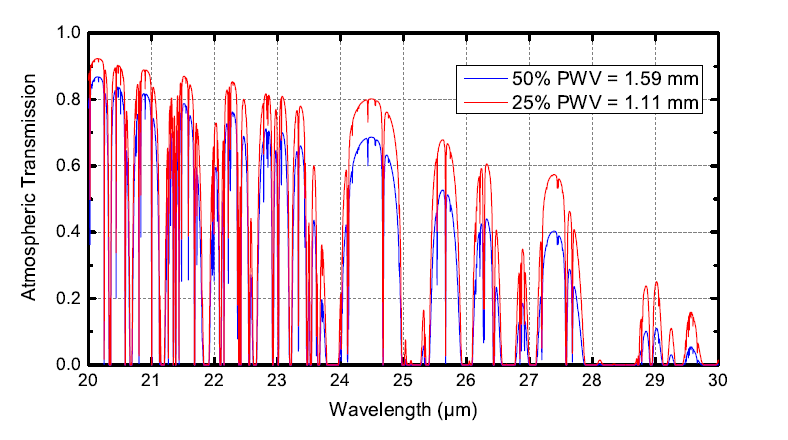Precipitable water vapor (PWV) is an important parameter in the atmospheric column, which impacts the performance of an astronomical observatory in the research of the IR and millimeter bands.
The water vapor is the most important absorber of cosmic radiation, which is the main cause of the opacity for ground-based astronomical observation in infrared and other bands. Therefore, accurately measuring and researching on the temporal variability of PWV is critical in site testing tasks.
Since 2017, research on the observing conditions at the Muztagh-ata station has been carried out by Xinjiang Astronomical Observatory (XAO), Chinese Academy of Sciences. In order to explore the observation condition of Muztagh-ata station in the IR and millimeter bands, Xu Jing, senior engineer of XAO, studied the PWV distribution and the transmission in the mid-infrared bands at the Muztagh-ata station based on the remote-sensing datasets and limited radiometers data.
The results confirmed that the Muztagh-ata station has excellent condition with low level water vapor for astronomical observations. The PWV values in median clear days were 2.28 mm and 2.37 mm for 2018 and 2019, respectively.
The researchers calculated the atmospheric transmission in mid-infrared bands using the AM model. They confirmed the potential of Muztagh-ata station for IR observation and the hosting of the 1.9m telescope.
This research has filled the gap in the study on PWV at Muztagh-ata station. The next phase of this research will focus on exploring the observation potential in millimeter and submillimeter bands.
This results were published in Publications of the Astronomical Society of the Pacific(PASP,2022,134,1031).
Monthly statistics of PWV in clear days during 2018 and 2019.

Atomspheric transmission at Muztagh-ata site in the wavelength region from 20 μm to 30 μm.
Contact: XU Jing
Xinjiang Astronomical Observatory, Chinese Academy of Sciences
Email: xujing@xao.ac.cn